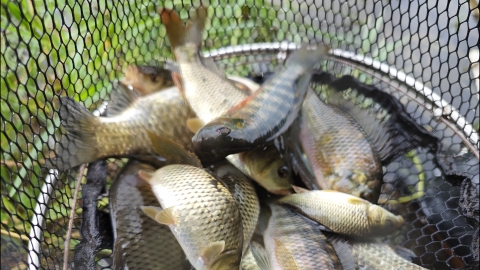Which parts inside a fish's belly should not be eaten
Parts of a fish that should not be eaten include the gallbladder, the black membrane lining the internal organs, intestinal waste, gills, and eggs. These parts may contain toxins, pollutants, or substances that are difficult to digest, and consuming them can easily lead to physical discomfort. If symptoms such as abdominal pain, vomiting, or dizziness occur after accidental ingestion, medical attention is recommended immediately.
1. Fish gallbladder: The gallbladders of most fish contain toxic substances such as bile salts and cyanide compounds. Even small amounts can damage the liver and kidneys, causing nausea, vomiting, and jaundice; in severe cases, it can be life-threatening. Regardless of the fish species, the gallbladder should never be consumed.
2. Black membrane on internal organ walls: This black layer is the visceral peritoneum of the fish, which may absorb heavy metals, pollutants, and bacteria. Eating it can irritate the gastrointestinal tract, leading to bloating and diarrhea. It should be thoroughly scraped off during fish preparation.

3. Intestinal waste: Fish intestines contain undigested food residues and bacteria. If not thoroughly cleaned, consumption may cause intestinal infections with symptoms like abdominal pain and diarrhea. Such waste may also harbor parasitic eggs.
4. Fish gills: Gills are respiratory organs that continuously filter impurities, bacteria, and pollutants from water. Harmful substances tend to adhere to their surface, and the texture is coarse and hard to digest. Consuming gills may negatively affect health, so they should be completely removed.
5. Fish eggs: Eggs from certain fish such as pufferfish and catfish contain toxins and can cause poisoning if ingested. Even eggs from generally edible fish may carry bacteria if sourced improperly or spoiled, so safety must be confirmed before consumption.
When preparing fish, first cut open the belly and remove the gills, gallbladder, and intestines one by one. Thoroughly scrape off the black membrane lining the inner cavity. Rinse the fish cavity under running water to ensure all waste is removed. Before cooking, inspect the internal organs to confirm there are no signs of spoilage or suspicious areas.




